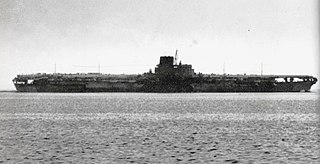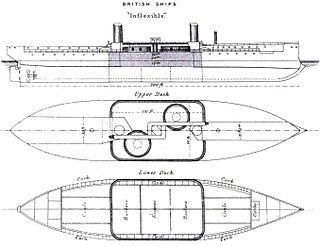This article needs additional citations for verification .(August 2013) |


In navies and the maritime industry, damage control is the emergency control of situations that may cause the sinking of a watercraft.
Contents
Examples are:
This article needs additional citations for verification .(August 2013) |


In navies and the maritime industry, damage control is the emergency control of situations that may cause the sinking of a watercraft.
Examples are:
Simple measures may stop flooding, such as:
More complicated measures may be needed if a repair must take the pressure of the ship moving through the water. For example:
Damage control training is undertaken by most seafarers, but the engineering staff are most experienced in making lasting repairs.
Damage control is distinct from firefighting. Damage control methods of fighting fire are based on the class of ship and cater to ship specific equipment on board.

Particular examples:
![]() Media related to Damage control at Wikimedia Commons
Media related to Damage control at Wikimedia Commons
![]() The dictionary definition of damage control at Wiktionary
The dictionary definition of damage control at Wiktionary

Shōkaku was the lead ship of her class of two aircraft carriers built for the Imperial Japanese Navy (IJN) shortly before the Pacific War. Along with her sister ship Zuikaku, she took part in several key naval battles during the war, including the attack on Pearl Harbor, the Battle of the Coral Sea, and the Battle of the Santa Cruz Islands, before being torpedoed and sunk by the U.S. submarine USS Cavalla at the Battle of the Philippine Sea.

The second USS California (ACR-6), also referred to as "Armored Cruiser No. 6", and later renamed San Diego, was a United States Navy Pennsylvania-class armored cruiser.

USS Vestal (AR-4) was a repair ship in service with the United States Navy from 1913 to 1946. Before her conversion to a repair ship, she had served as a collier since 1909. Vestal served in both World Wars. She was damaged during the Japanese attack on Pearl Harbor and received two battle stars for her World War II service.

Shinano (信濃) was an aircraft carrier built by the Imperial Japanese Navy (IJN) during World War II, the largest such built up to that time. Laid down in May 1940 as the third of the Yamato-class battleships, Shinano's partially complete hull was ordered to be converted to an aircraft carrier following Japan's disastrous loss of four of its original six fleet carriers at the Battle of Midway in mid-1942. The advanced state of her construction prevented her conversion into a fleet carrier, so the IJN decided to convert her into a carrier that supported other carriers.

USS Samuel B. Roberts (FFG-58) is one of the final ships in the United States Navy's Oliver Hazard Perry-class of guided missile frigates (FFG). Commissioned in 1986, the ship was severely damaged by an Iranian mine in 1988, leading U.S. forces to respond with Operation Praying Mantis. Repaired and returned to duty, the ship served until decommissioned in 2015.

The third ship named USS Aaron Ward (DD-773/DM-34) in honor of Rear Admiral Aaron Ward was a Robert H. Smith-class destroyer minelayer in the service of the United States Navy.

Operation Praying Mantis was an attack on 18 April 1988 by the United States Armed Forces within Iranian territorial waters in retaliation for the Iranian naval mining of international waters in the Persian Gulf during the Iran–Iraq War and the subsequent damage to an American warship.

USS Oglala (ID-1255/CM-4/ARG-1) was a minelayer in the United States Navy. Commissioned as Massachusetts, she was renamed Shawmut a month later, and in 1928, was renamed after the Oglala, a sub-tribe of the Lakota, residing in the Black Hills of South Dakota.

The first USS Sassacus, a wooden, double-ended, sidewheel steamer in commission in the United States Navy from 1863 to 1865. She saw service in the American Civil War.

USS Chevalier (DD-451), a Fletcher-class destroyer, was the first ship of the United States Navy to be named for Lieutenant Commander Godfrey Chevalier.

USS Diamond Head (AE-19) was a Mount Hood-class ammunition ship in service with the United States Navy in 1945-1946 and from 1951 to 1973. She was sold for scrapping in 1974.

USS Emmons (DD-457/DMS-22) was a Gleaves-class destroyer of the United States Navy, named for Rear Admiral George F. Emmons (1811–1884).

USS Hugh W. Hadley (DD-774) was an Allen M. Sumner-class destroyer which served in the United States Navy during World War II.

USS Tide (AM-125) was an Auk-class minesweeper acquired by the United States Navy for the dangerous task of removing mines from minefields laid in the water to prevent ships from passing.

USS Pelican (AM-27/AVP-6) was an Lapwing-class minesweeper acquired by the United States Navy for the dangerous task of removing mines from minefields laid in the water to prevent ships from passing.

All or nothing is a method of naval warship armor, best known for its employment on dreadnought battleships. The concept involves heavily armoring the areas most important to a ship while the rest of the ship receives no armor. The "all or nothing" concept avoided light or moderate thicknesses of armor: armor was used in the greatest practicable thickness or not at all, thereby providing "either total or negligible protection". Compared to previous armoring systems, "all or nothing" ships had thicker armor covering a smaller proportion of the hull.

USS Auk (AM-38) was a Lapwing-class minesweeper acquired by the United States Navy after World War I to remove mines that had been placed during the war.